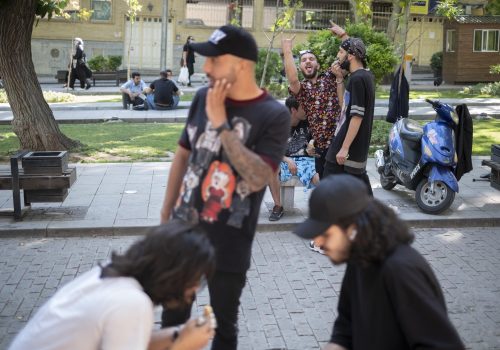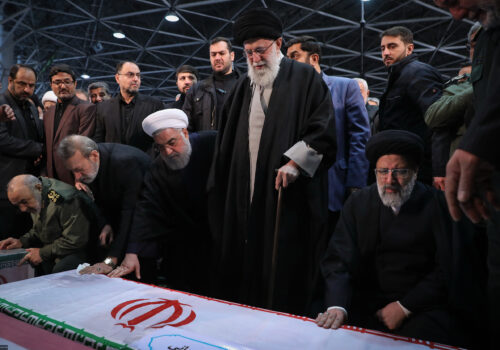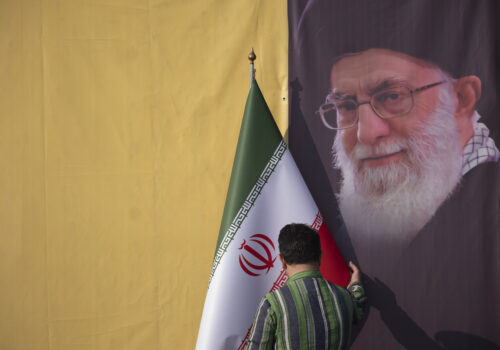Everything you need to know about Iranian rapper Toomaj Salehi and his death sentence
On April 24, a revolutionary court in Iran sentenced dissident rapper Toomaj Salehi to death on charges of “spreading corruption on the Earth.” In July 2023, the same court had sentenced him to seventy-five-months in prison on the same charges but released him on bail for a short time in November 2023. The death sentence appears to be the regime’s response to Salehi publicly speaking about the torture he endured during his detention, while out on bail.
“Spreading corruption on the Earth” is a charge revolutionary courts in Iran have historically used against dissidents, including those extrajudicially killed during mass executions of the 1980s—known as the 1988 massacre—and people who were arrested in relation to the 2022 Woman, Life, Freedom uprising.
Salehi is best known for creating protest songs that spoke out against the oppressive Islamic Republic policies that were the focus of the Woman, Life, Freedom uprising prompted by the death in custody of Mahsa Jina Amini in September 2022.
The open-source information identified below has been preserved and analyzed through the Iranian Archive, a joint effort led by the Atlantic Council’s Strategic Litigation Project (SLP) and Mnemonic, and a coalition of open-source investigation experts at the Promise Institute for Human Rights at the University of California, Los Angeles (UCLA) Law, UC Berkeley’s Human Rights Center, Amnesty International’s Digital Verification Corps, the Iran Human Rights Documentation Center, and the Azadi Archive. The archive forensically preserved more than two million pieces of digital evidence recording serious human rights violations committed by the Islamic Republic of Iran against Woman, Life, Freedom movement protesters to support future accountability efforts related to human rights violations in Iran.
Below is a summary of the open-source investigation about Salehi, which is part of a broader report being carried out through the SLP, Iranian Archive, and UC Berkeley’s Human Rights Center. The report analyzes key incidents of violence carried out by the Islamic Republic during the Woman, Life, Freedom uprising, and is due out this fall.
Salehi’s arbitrary arrest and detention were highlighted in the detailed findings of the Independent International Fact-Finding Mission on the Islamic Republic of Iran (FFMI), a United Nations-mandated body tasked with investigating alleged human rights violations committed in the context of the protests that began on September 16, 2022. His arrest was identified as a key incident of large-scale repressive measures taken by the Islamic Republic authorities to silence artists and writers during the protests.
Importantly, the FFMI found that such arrests and imprisonment are happening as part of a widespread and systematic attack against civilians in Iran and amount to crimes against humanity. While Salehi’s case is highlighted, it is important to remember that this is happening all over Iran and continuing to harm lives to this day.
The following is a timeline detailing the persecution of Salehi for the crime of defying the Islamic Republic’s authoritarian rule in a peaceful manner through his art. The document is based on open-source research with a focus on material published by Iranian state media, including forced confessions of Salehi aired by state television. Although the material is laced with state propaganda and false accusations against Salehi, the details can be used to display the violence he endured and the illegality of judicial procedures.
Arrest—October 30, 2022
Iran’s state broadcaster, the Islamic Republic of Iran Broadcasting (IRIB), reported on October 30, 2022, that Iranian rapper Toomaj Salehi was arrested. The same day, in a video report shared by the judiciary’s official outlet, Mizan News Agency, Salehi was accused of “planning and organizing” protests in collaboration with “diaspora leaders” and “threatening” security forces. The video included a collage of Salehi’s social media posts and a photo purporting to show him in daylight after his arrest, blindfolded and in a vehicle.
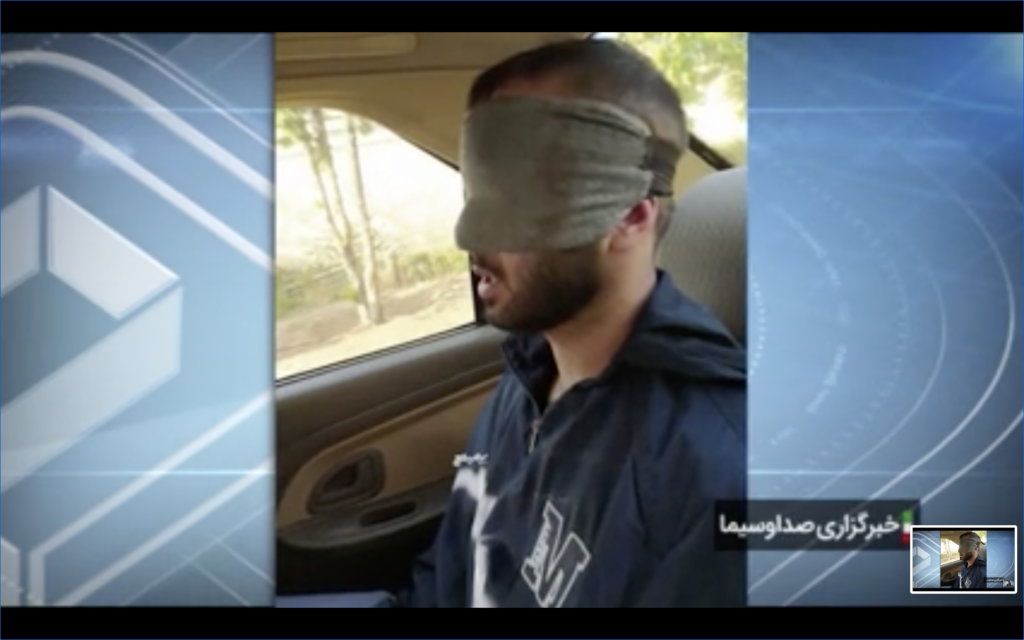
The video report was produced by IRIB “interrogator journalist” Ameneh Sadat Zabihpour, who was sanctioned by the United States for her role in soliciting and broadcasting “hundreds of forced confessions of Iranian, dual national, and international detainees in Iran.”
First video
On November 2, 2022, the Young Journalists Club (YJC), a media body affiliated with the IRIB, released a short clip showing Salehi sitting on the ground, blindfolded and with a swollen face, saying: “[I’m] Toomaj Salehi. I said that I’m sorry. I said that I tell ‘you as a friend that you should run away.’” The video starts with a short clip of an already-deleted social media post by Salehi in which he tells security forces to desert their posts and “run away” instead of oppressing people.
IRIB later used the video in a report that described Salehi as “one of the leaders of recent riots” and “instigating sedition online.” The report was broadcast on November 2, 2022, and was posted on the IRIB website two days later. IRIB reporter Atefeh Godini produced the report.
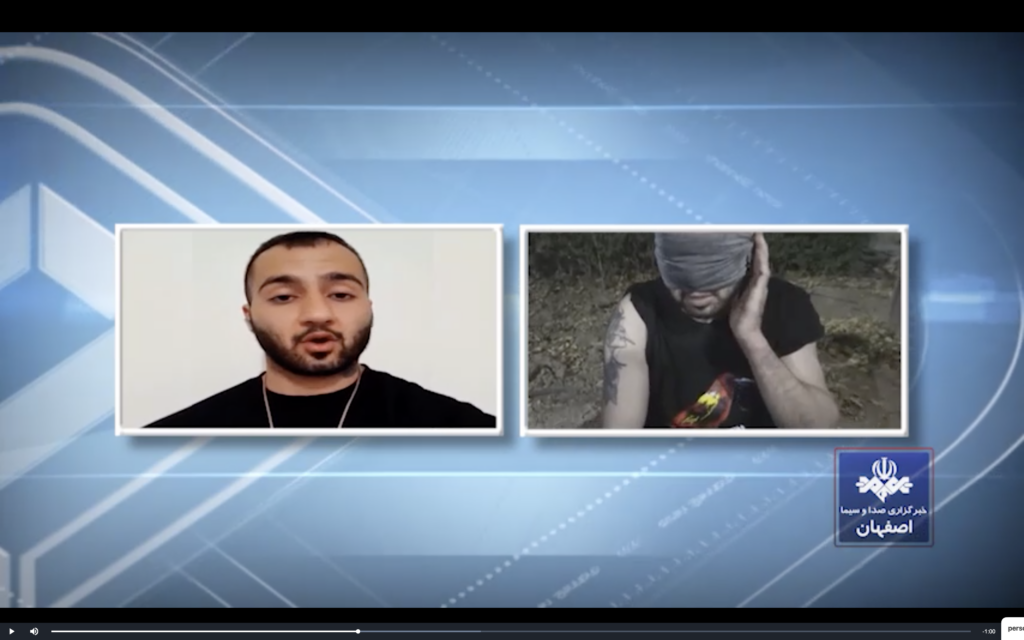
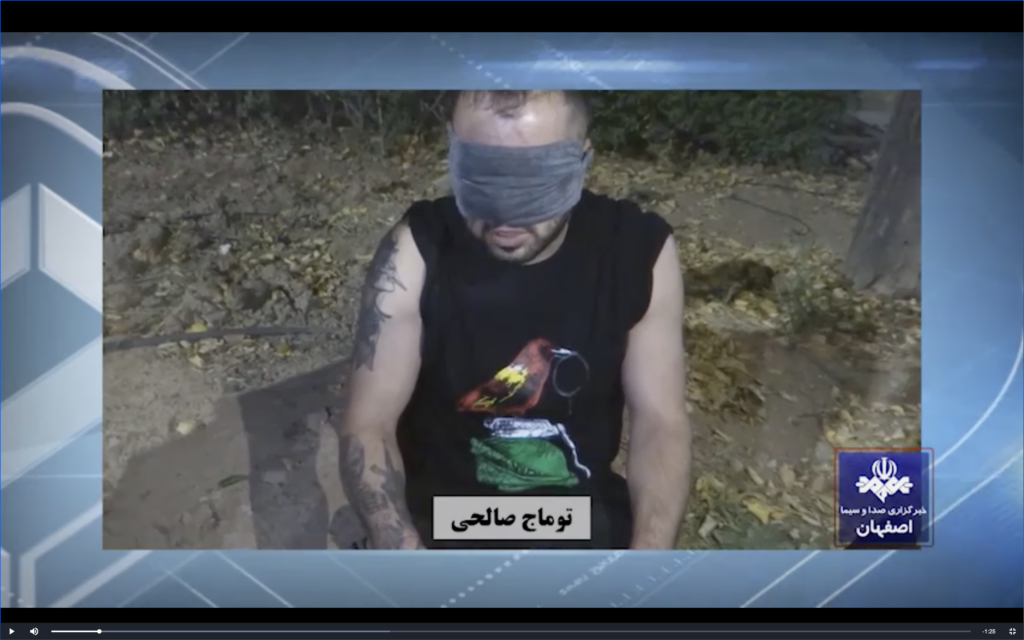
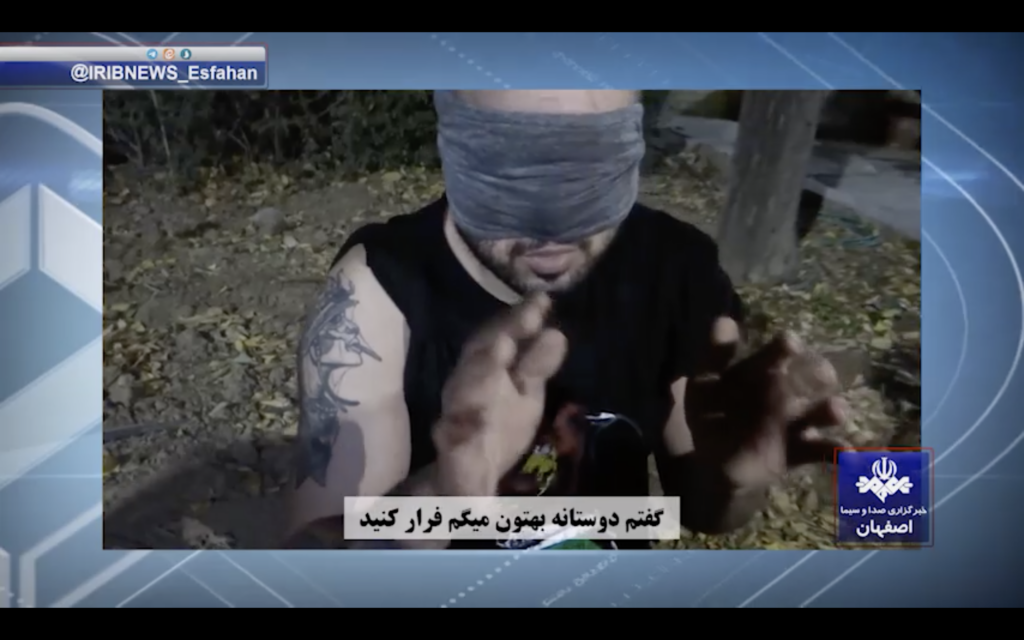
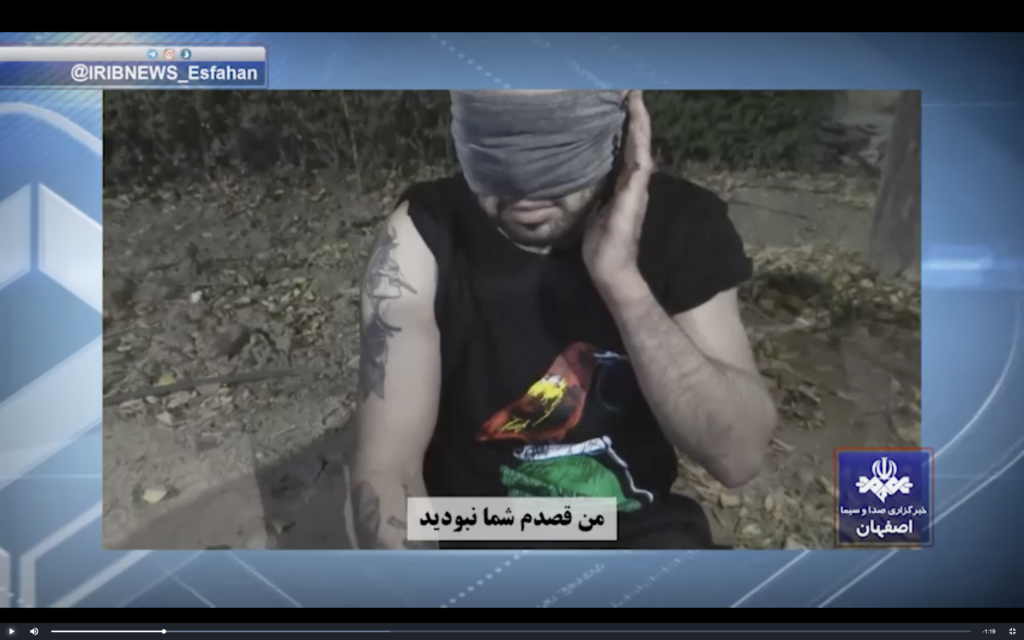
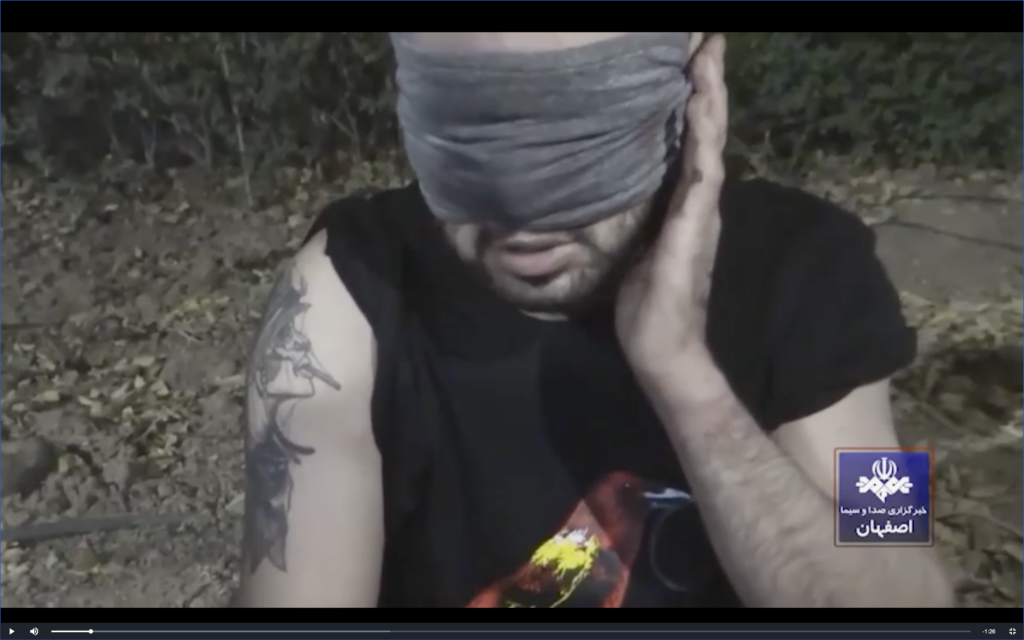
- The video shows Toomaj Salehi sitting on the ground, blindfolded and with a swollen face.
- He touches the side of his head as if in pain.
- Apparently anticipating more beatings, he raises his hand in front of his face.
- The location is not clear. The video is recorded in the open and during dark hours. A tree can be seen in the background.
Second video
On December 6, 2022, Iranian state media including the government-run daily Iran published a new video titled “Toomaj Salehi: I apologize to the society for the violence I caused.”
The video opens with doctored segments of a music video of a rap song by Salehi published in October 2022, in which he criticized the regime for its corruption and oppression. In the track, Toomaj says that he “rises up from the bottom” of society and is defying the “head of the pyramid” responsible for the oppression. The video released by state media includes three segments in which Salehi speaks.
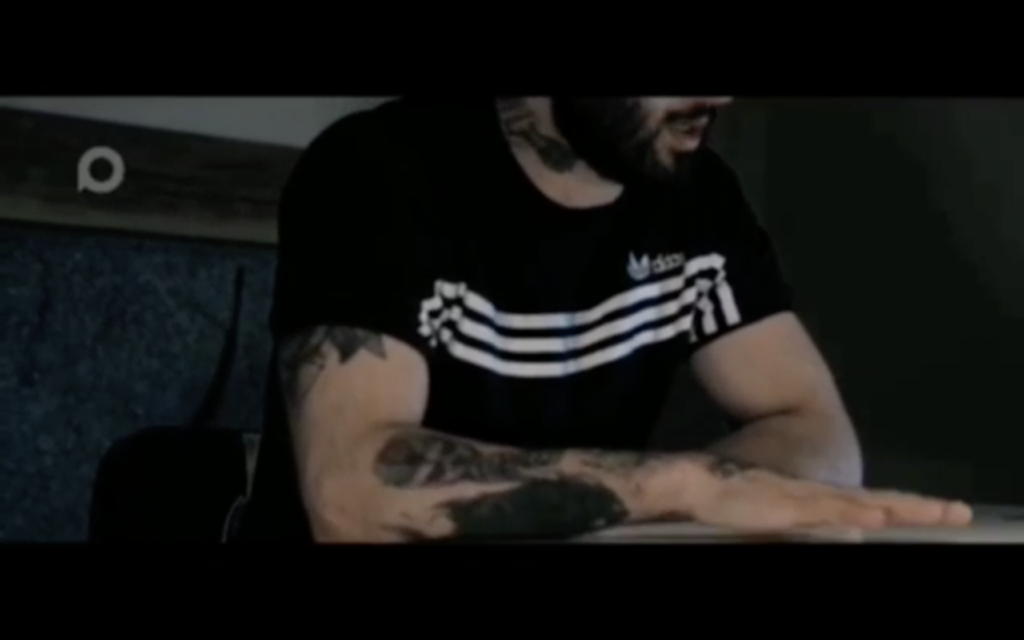
The first segment shows a part of Salehi’s face with him saying, “I wrote that. There is a copy of its text,” an apparent reference to the lyrics.

Then, overlaid on muted videos of him, a voice similar to Salehi’s can be heard saying, “Music can beget violence.”
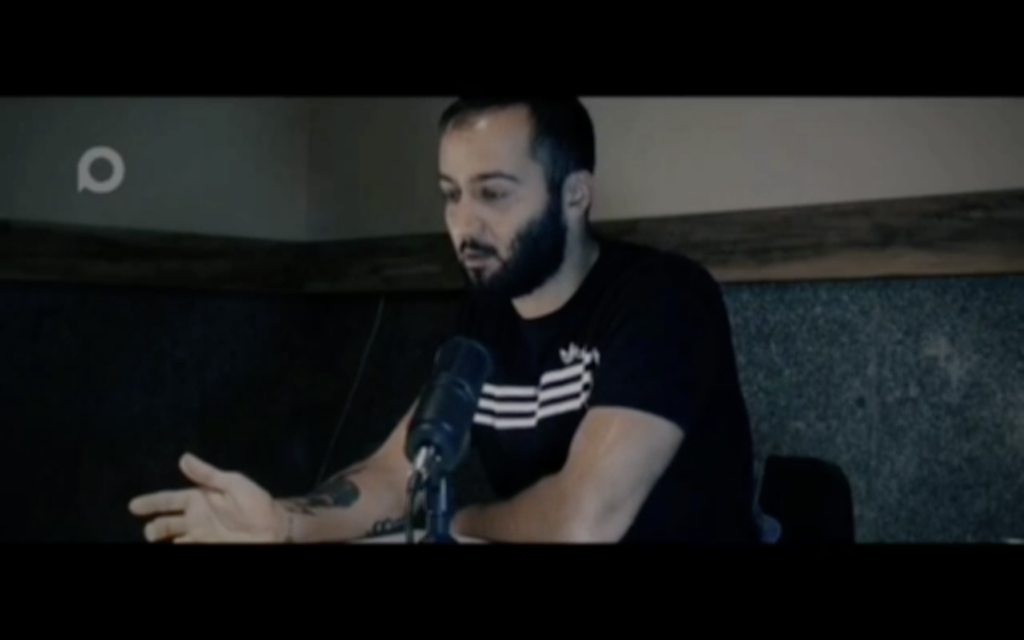
In the third segment, Salehi appears to say, “This was my mistake. I apologize to you for that,” pointing to the interrogator/interviewer in the room, “and to society for producing violence. I wish I could…I can only apologize now. I wish I could produce the counterpoint to [the music].”
The video released by state media heavily references Salehi’s October 2022 music video “Faal [Fortune].”
The video released by state media is recorded from multiple angles with the camera moving, apparently using a camera trolley. Shots recorded from above imply that the video was produced in a professionally equipped studio, and the cuts and edits also suggest that it was made through a long production process.
Video released by state media
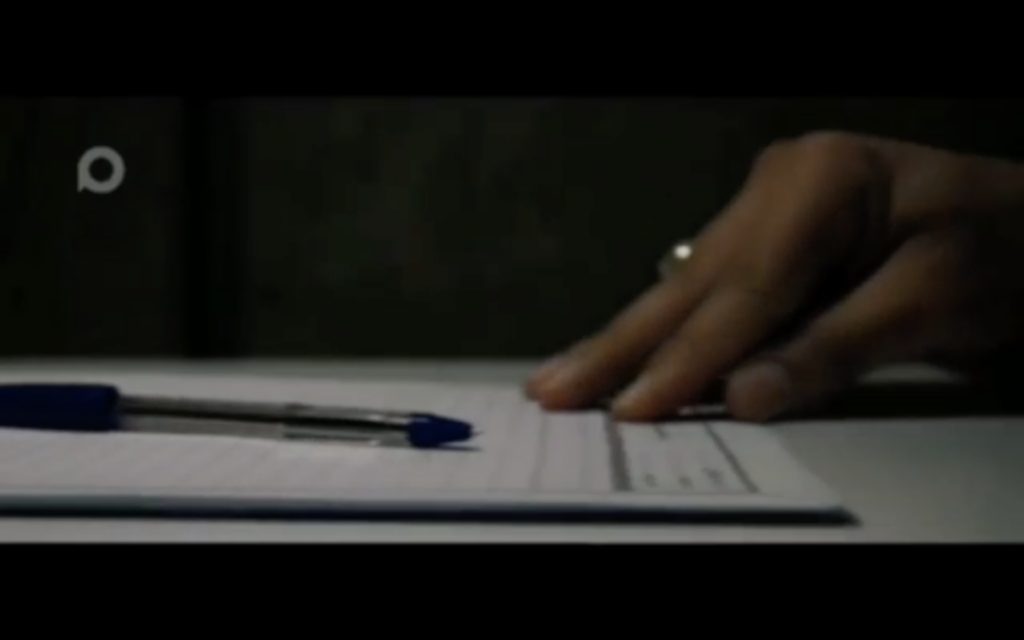
The hand of a man adorned with an Aqeeq ring pushes a paper toward Salehi. The markings on the paper are similar to those on papers used for writing confessions.
Faal music video
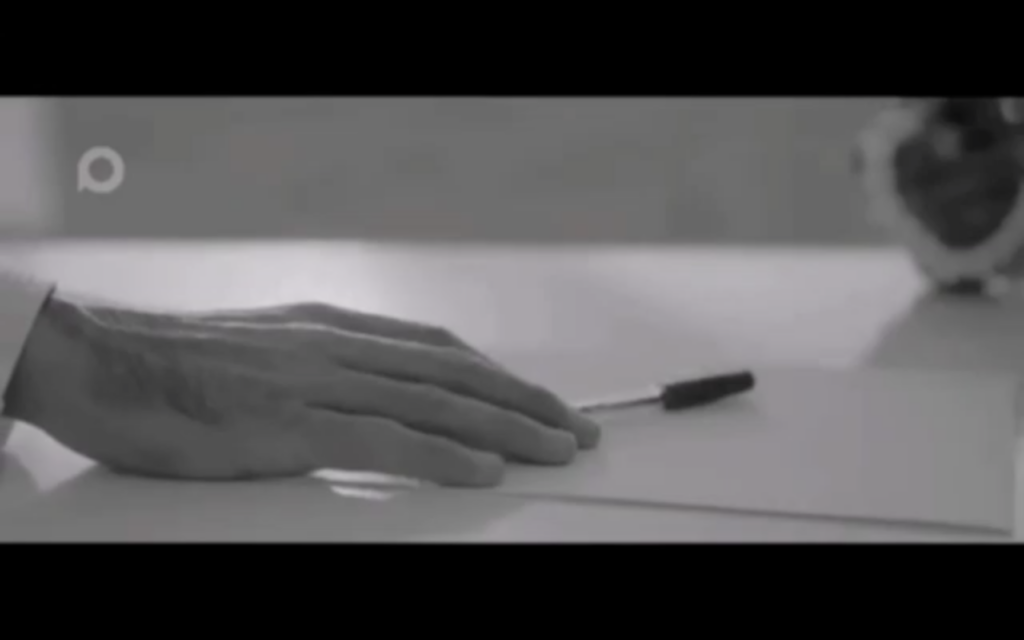
In the music video, Salehi gives the other person a piece of paper to take notes on what he is saying and, he raps, to “pass them up.”

In the video released by state media, Salehi is shown drinking from a white cup similar to the one shown in the music video.
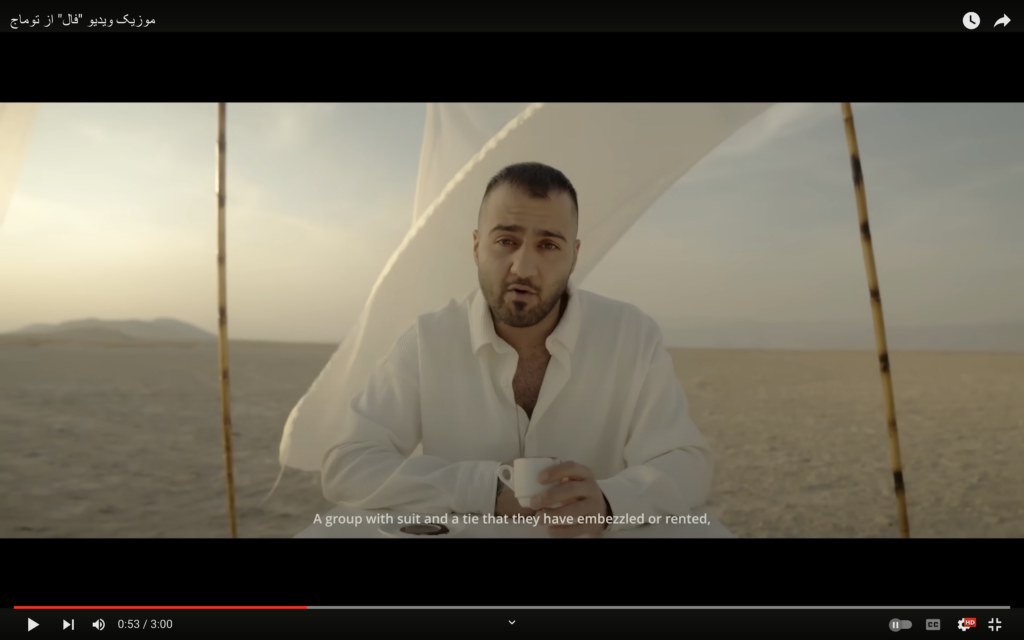
In the music video, Salehi reads the regime’s coffee-cup fortune (“Faal” in Persian).
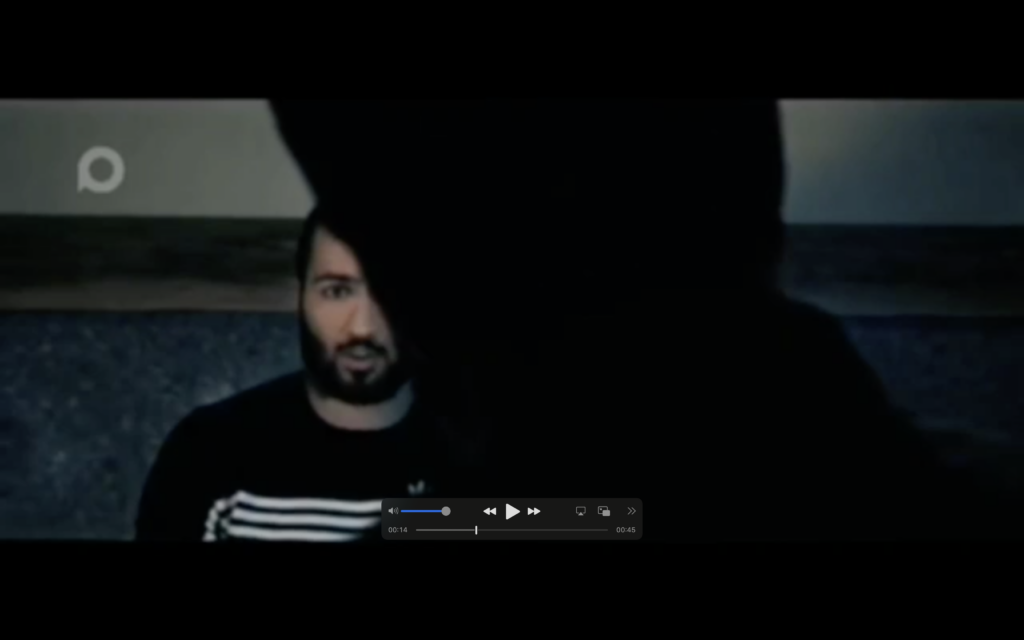
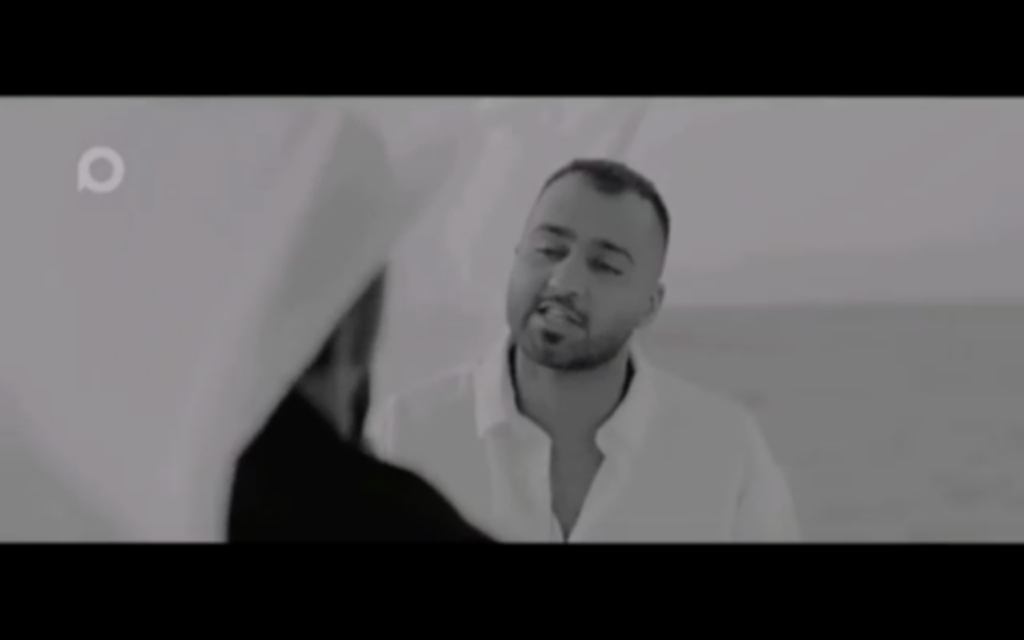
The video released by state media even mimics the camera motions used in Salehi’s music video.
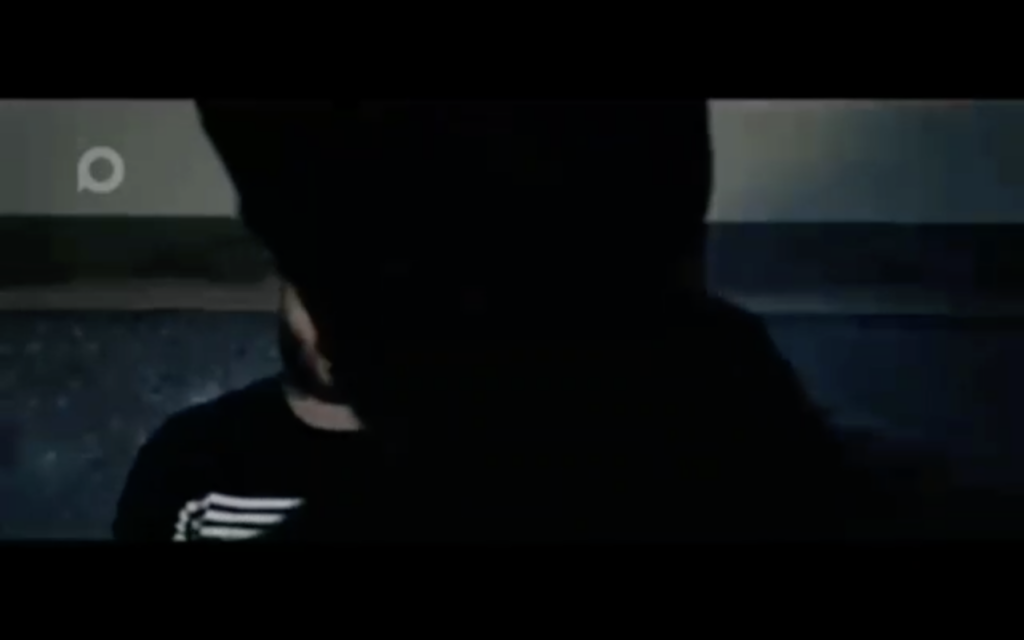
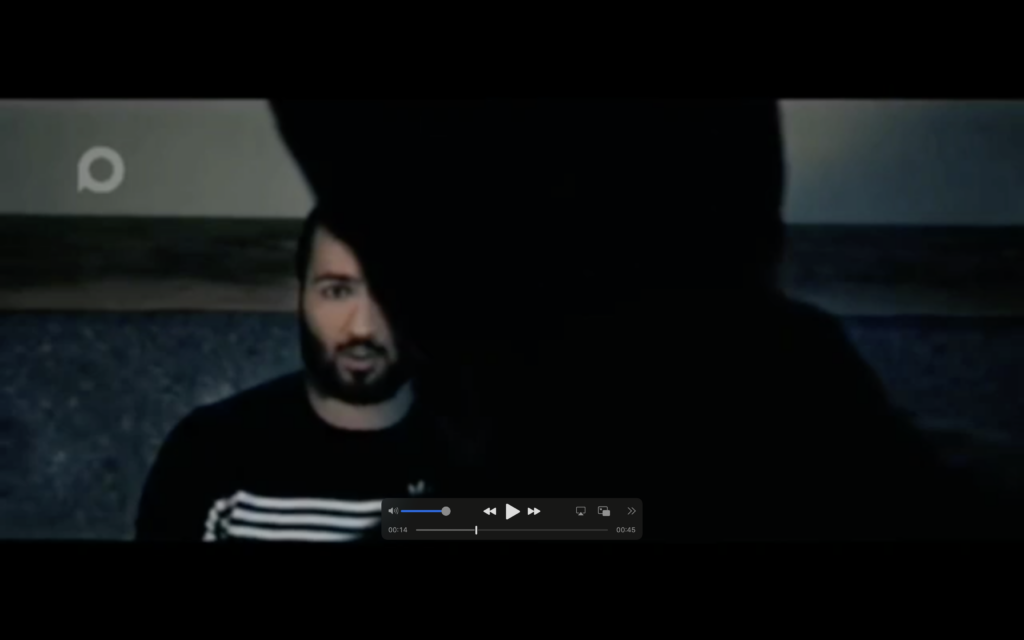
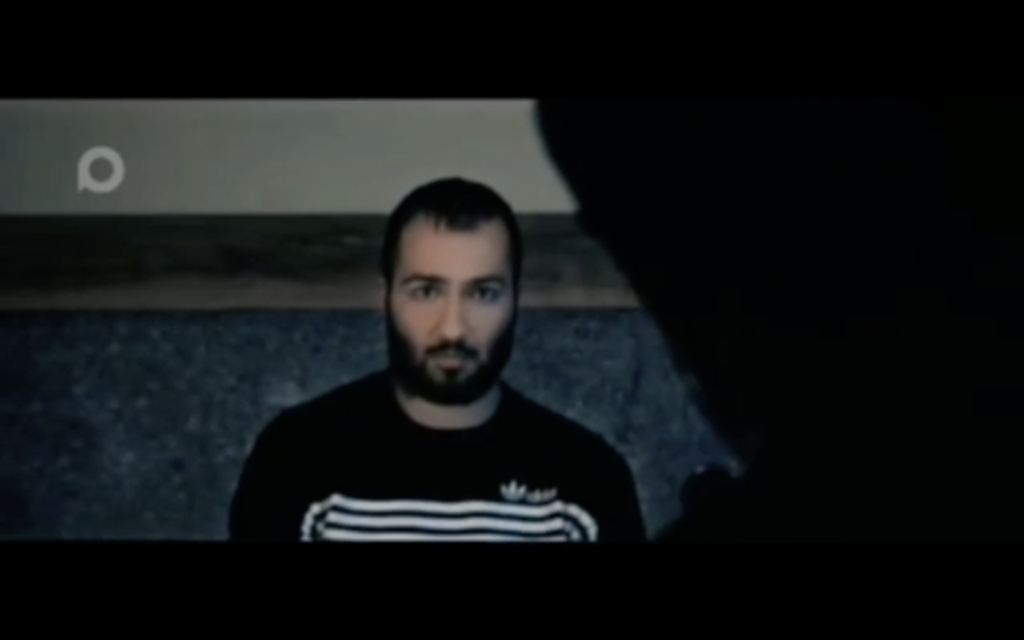
The steady camera motions in the video published by state media suggest the use of a camera trolley.
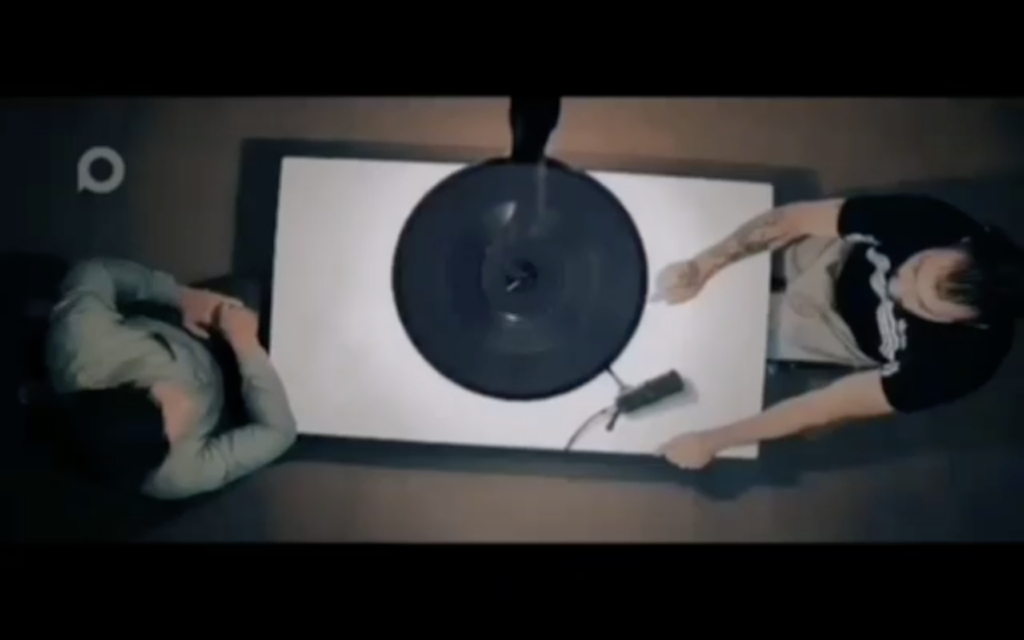
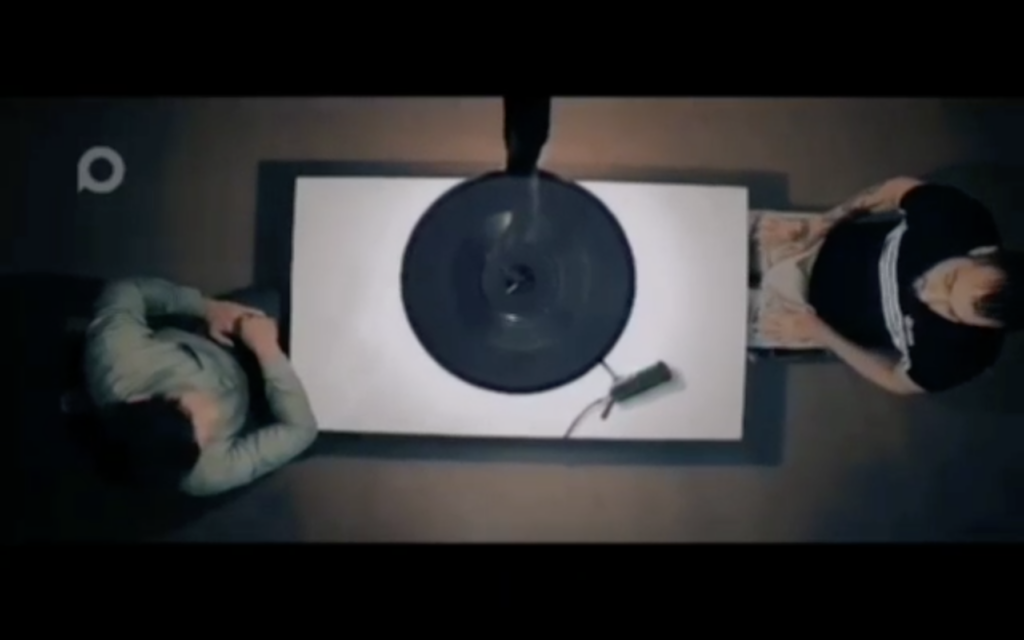
The video published by state media also includes overhead shots, implying that the video was produced in a professionally equipped studio.
All the cinematic techniques used imply that the video was recorded over a long process in which Salehi might have been forced to repeat dictated lines. The long production process and heavily doctored material also indicate that he could have been asked questions unrelated to the case, and his responses were manipulated and edited to convey a message that the regime prefers.
Statement after release
Toomaj Salehi was released from Isfahan Central Prison on November 18, 2023, on bail. On April 21, 2023, judiciary spokesperson Masoud Setayeshi confirmed he was released on bail and added that Salehi’s sentence was being reviewed per an order from the Supreme Court.
On November 27, 2023, the YouTube account that releases music produced by Toomaj Salehi posted a video of him after his release from jail. The channel has been releasing Salehi’s music as early as October 18, 2020, based on the oldest post available on the account published on that day.
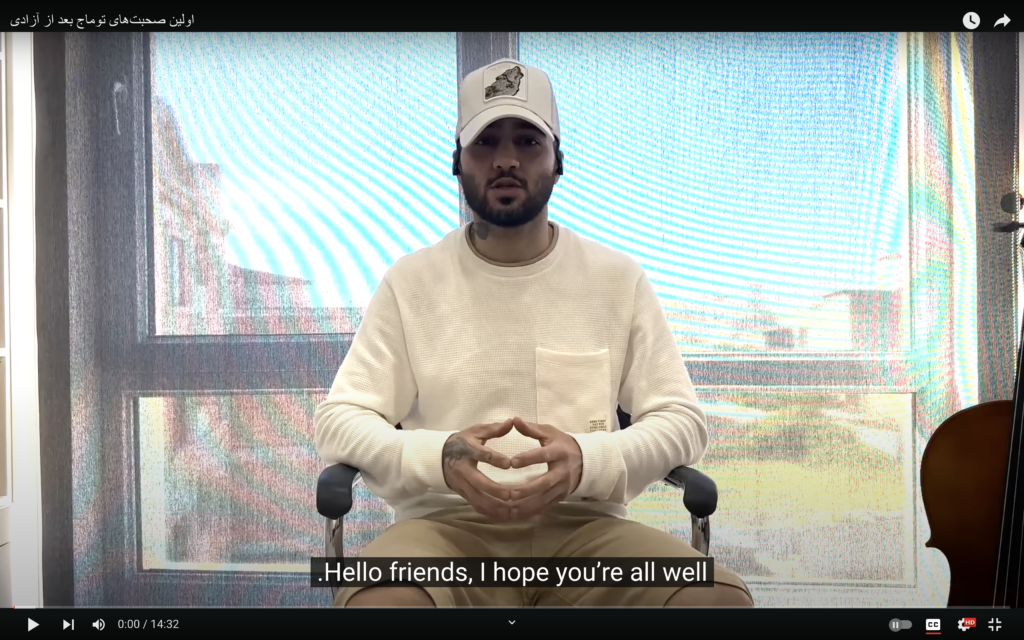
In the fourteen-and-a-half-minute video, Salehi describes his time in custody and explains his forced confession. His description of his ordeal includes, but is not limited to, the following statements.
- Malign actors are trying to “assassinate [his] character.” Salehi pointed to state media reports that he “confessed” and “snitched” on others. “Whom did I have to snitch on? What did I have to confess to? Everything I’ve done has been on your phones [and public]. I wasn’t hiding anything to confess to.”
- “I was severely tortured at the time of my arrest. They broke my arms and my legs. They were hitting my face and my head, so at first I tried to cover myself with my hands, and they broke my fingers.”
- Salehi also says that he was given a shot in the neck at the time of his arrest. “One of the other political prisoners told me that the injection they gave me in my neck was most likely adrenaline so I wouldn’t pass out so that I would be conscious during the time they were torturing me so I would feel the pain fully.”
- “About confessions, I didn’t even hand over [access to] my social media accounts.”
- Salehi points out that during his detention, whenever he raised the issue of the illegality of the security officers’ behavior, “they would laugh and say ‘what law? We can and we do whatever [we want].’”
- Before Salehi’s release from jail, the judge, Morteza Barati, and his case officer met with him demanding access to his social media accounts, which he refused. (Security forces often seize social media accounts of political prisoners before their release and condition their release on bail on their not using social media.)
- Some anonymous social media accounts with apparent ties to the state pointed to his apparent physical health after his release on bail, arguing that his being tortured was “fake news.” Reacting to those comments, Salehi said, “Four months ago, when I was transferred from [detention center of the] Intelligence [Ministry] to prison, they wouldn’t say that. My bones were broken a year and a month ago. They have naturally healed by now.”
- In the video, Salehi points out that he did not receive proper medical care for the broken bones, that he cannot walk properly and limps, and that walking is sometimes painful for him. He also complained about chronic pain in his hands.
- “The Intelligence Ministry has produced and released a video in which it appears that I am apologizing to the interrogator. I didn’t say that. I wasn’t talking to the interrogator. I was interviewed there for nine hours. I have made one or two gaffes. The person asked me a question, for example asking me ‘If right now, the mother of such and such person who went out [to protest] because of you and is now in prison, was sitting before you, what would you tell her?’ And they have edited [my response] in a manner that it appears that I am apologizing to him, which is ridiculous.”
- Salehi says that he has filed a complaint about the torture he endured during his detention.
- In the video, Salehi says that he was held in “solitary confinement for 8–9 months” and subjected to “white torture” on top of the “physical torture in the beginning” after his arrest. (White torture is sensory deprivation.)
- He also said that the Intelligence Ministry had “ordered the prison chief to make conditions worse” for him because he had “filed a complaint against them.”
Timeline
Toomaj Salehi was born December 3, 1990. He is from Iran’s Bakhtiari ethnic minority. His father was a political prisoner for eight years.
Previous Arrest—September 13, 2021
Toomaj Salehi was arrested on September 13, 2021, at his home. He was charged with “insulting the Supreme Leader,” Ayatollah Ali Khamenei, and “propaganda against the regime,” under Articles 514 and 500 of the Islamic Penal Code. The BBC’s Persian service reported at the time that he was sentenced to six months in jail and an unreported fine. The court suspended the sentence for one year. On September 21, 2021, Salehi was released on bail.
Arrest—October 30, 2022
Salehi was arrested again on October 30, 2022. In an interview with Mizan News Agency, the official outlet of Iran’s judiciary, Public and Revolutionary Prosecutor of Isfahan Seyed Mohammad Mousavian listed Salehi’s charges as “propaganda against the regime, cooperation with hostile states, and establishing an illegal group with the intention of disrupting national security.” Mousavian added, “The accused played a key role in instigating riots and inviting and encouraging the recent mayhem and riots in Isfahan Province and in the city of Shahinshahr.”
Charges—November 27, 2022
Chief Justice of Isfahan Province Asadollah Jafari told Mizan: “Toomaj Salehi has been charged with spreading corruption on the Earth by spreading lies in a way causing major losses, propaganda against the regime, establishing and managing illegal groups with the intention of disrupting national security, cooperating with a hostile government against the Islamic Republic, spreading lies and disturbing the public mind through cyberspace, and inciting and encouraging people to commit violent acts.”
Alleged death sentence—July 5, 2023
The semi-official Tasnim News Agency reported that Salehi “had been sentenced to death, but his sentence was reduced to imprisonment.”
The alleged sentence was not announced by the judiciary—as is customary—or Salehi’s lawyer. At the time, it raised questions about the credibility of Tasnim’s report and whether the news was part of the regime’s psychological warfare against protesters.
Prison sentence—July 12, 2023
Jafari said that Salehi was sentenced to seventy-five months (six years and three months) in prison. He also received a two-year ban on leaving the country, a two-year ban on music-related activities, and a requirement to attend “workshops, courses and life skills classes” held by the judiciary’s crime-prevention department. Jafari added that Salehi’s pending six-month jail sentence from 2021 will also be implemented.
Torture complaint—October 29, 2023
On October 29, 2023, Salehi’s account on X (formerly Twitter), which is run by his social media manager from outside Iran, wrote that he had filed a complaint against the director of the Intelligence Ministry’s branch in Isfahan province and the officers responsible for his case over “torture and illegal behavior during [his] illegal detention.”
The complaint lists the illegal conduct of security officers, including the following.
- Salehi’s place of residence was illegally raided. Security officers climbed the wall and did not provide an arrest warrant. Two other residents of the building were also arrested without a warrant. The personal vehicle of Salehi’s father was seized without a warrant.
- “Violent arrest, beating, torture, and verbal abuse for twelve hours (from 3:00 AM on October 30, 2022 to 3:00 PM of the same day) in a place outside the city while blindfolded and even filming these inhumane actions, some of which were broadcasted by IRIB.”
- Beating leading to
- a fracture of the right leg;
- a fracture of the fourth finger on the left hand;
- severe damage to both eyes; and
- fractured ribs.
- Officers failed to transfer Salehi to the prosecutor’s office within the legal timeframe or hand him over to the detention center, and failed to provide medical care in time.
The statement also adds that Salehi was arrested in Gerd Bisheh, a village in Chaharmahal and Bakhtiari province by officers of the Isfahan branch of the Intelligence Ministry.
Salehi’s lawyer, Amir Raeisian, posted a photo of the official complaint on Instagram on December 2, 2023.
Release on bail—November 18, 2023
Salehi was eventually released from prison on November 18, 2023 on bail. Judiciary spokesperson Masoud Setayeshi confirmed on April 21, 2023, that Salehi has been released on bail and added that the Supreme Court had called for his sentence to be amended as well.
Arrest—November 30, 2023
The government-run IRNA news agency reported that Salehi was arrested again on November 30, 2023, in the northern city of Babol in Mazandaran province.
The judiciary’s Mizan also wrote, “Toomaj Salehi was arrested on the charge of publishing lies and disturbing the public mind after publishing some false and undocumented comments online.”
Isfahan Chief Justice Jafari told Mizan that, in the case of Salehi, “all procedures, including arrest, interrogation, and investigation, have been carried out according to the law.”
Death sentence—April 24, 2024
On April 24, 2024, Salehi’s lawyer, Amir Raeisian, told the Tehran-based Shargh Daily, “Branch One of Isfahan Revolutionary Court, in an unprecedented move, has not implemented the Supreme Court’s ruling on the 2022 case of Toomaj Salehi.”
According to Raeisian, Branch One of Revolutionary Court of Isfahan has called the Supreme Court “ruling ‘advisory’ and emphasizing the independence of the lower court has accused Toomaj Salehi of ‘spreading corruption on the Earth’ and sentenced him to the highest punishment, death.”
This ruling is unprecedented. The recent ruling of the lower court is in direct conflict with an earlier ruling from the same court, as per directions from the Supreme Court. Amid reports of Salehi being sentenced to death in July 2023, the case was initially appealed to the Supreme Court. The Supreme Court called on the lower court to drop some of the initial charges. This led to Salehi being sentenced to seventy-five months in prison and his release on bail in November 2023.
Recently, the lower court re-assumed jurisdiction and, despite the prior ruling, Salehi was sentenced to death. This court, a “revolutionary court” with deep ties to the Islamic Republic’s security apparatus, determined that Salehi was responsible for the “extensive spread of corruption on the Earth,” and thus, death was appropriate.
Salehi’s lawyer also noted that the current ruling, along with the death sentence, has designated “additional punishments” for Salehi, including a two-year ban on traveling abroad and producing music.
Raeisian also noted that the Supreme Court had ruled that Salehi should benefit from “amnesty.”
On the same day, semi-official Mehr News, which is linked to the state-run Islamic Propagation Organization, confirmed that Salehi has been “sentenced to death for spreading corruption on the Earth.” It added that the sentence can be decreased to “long imprisonment and additional sentences” if Salehi and his lawyers appeal. There has been no accountability for the arbitrary detention and forced confession of rapper Toomaj Salehi.
Khosro Sayeh Isfahani is an advocate, journalist, and Internet researcher with years of experience working in Iran, including work related to the LGBTQI community.
Andrea Richardson is the senior legal researcher for investigations at the Human Rights Center.
Further reading
Tue, Oct 12, 2021
Down the ‘Rathole’: How a rapper channels Iran regime change discourse
IranSource By
Both the content of Toomaj Salehi’s hard-hitting rap songs, as well as the debates they have produced, speak to a transformed Iranian media landscape.
Wed, Mar 13, 2024
For meaningful change in Iran, Khamenei has got to go
IranSource By
The supreme leader's death will provide people inside Iran and the diaspora with a historic chance to make a foray into fundamental change in the country.
Thu, Jan 4, 2024
Iran targeted human rights sanctions series: Why are people and entities sanctioned for human rights abuses?
IranSource By Celeste Kmiotek, Lisandra Novo
Every perpetrator designated by a jurisdiction for targeted sanctions generally faces the same consequences.
Image: Members of Iranian diaspora protest the arrest of Toomaj Salehi by Joe Flood on November 12, 2022
